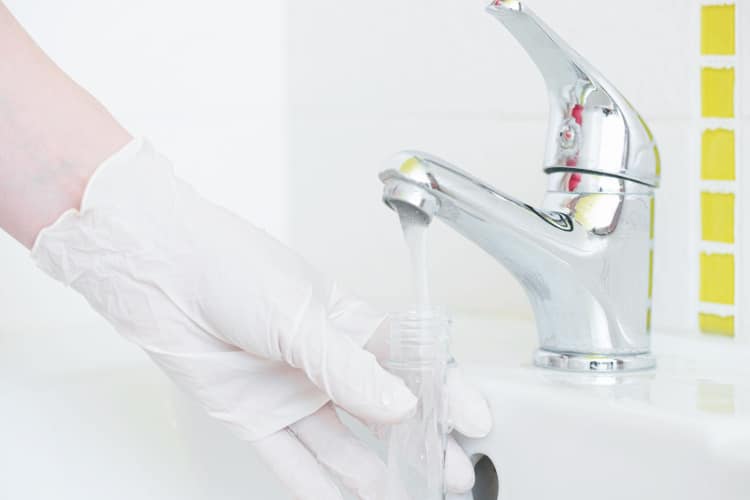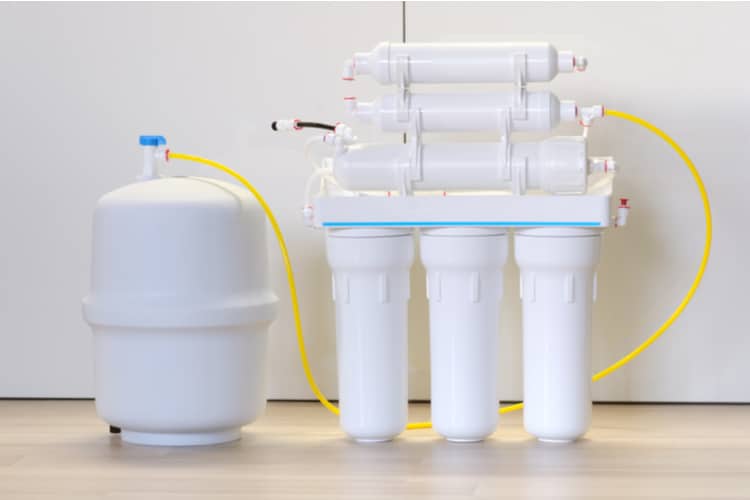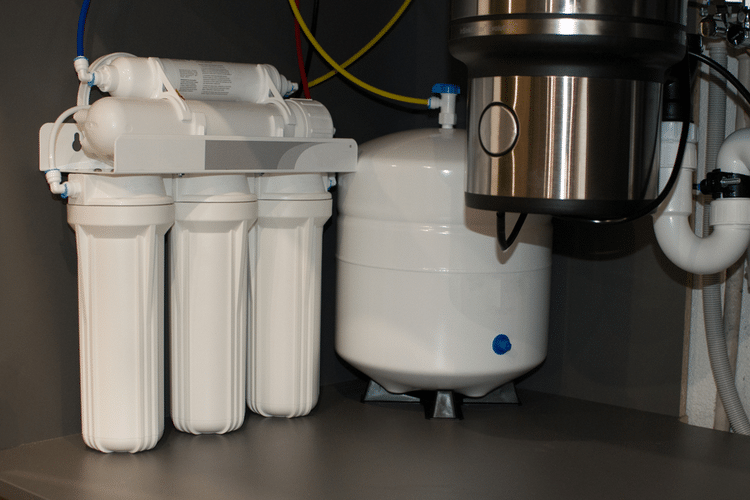Arsenic is a dangerous toxin sometimes found in drinking water. It is vital to know how to remove arsenic from water to keep your family safe. One way to accomplish this is with reverse osmosis (RO).
There are several different types of reverse osmosis systems. The type of system you require depends on your water quality and budget.

Reverse Osmosis Removes Arsenic
Reverse osmosis is an excellent method of removing arsenic from drinking water. Arsenic is a naturally occurring element found in water, air, and soil, and some industries utilize it. Arsenic is harmful to human health and can cause cancer.
Reverse osmosis can remove up to 99% of arsenic from water. The amount of arsenic removed depends on water pressure, the type of membrane, and the duration of the process.
What Is Reverse Osmosis?

Reverse osmosis forces water through a pre-filter to remove large particles, a carbon filter, and a semi-permeable membrane. The membrane allows water to pass, but not arsenic. Finally, the water is passed through a post-filter to remove any remaining particles.
After the arsenic filters out, it is flushed out of the system and into a drain. Water pressure is important.
Low pressure reduces the amount of clean water produced and reduces the effective life of the membrane. Most manufacturers recommend that RO units operate at 60 pounds per square inch (PSI).
The membrane pores are only .0001 microns in size, much smaller than arsenic, so a reverse osmosis system is a great way to eliminate this toxin from drinking water. Reverse osmosis also removes other contaminants, such as chlorine, lead and mercury.
The ionic charge is another determining factor of how well a reverse osmosis system filters water. The higher the ionic charge of a contaminant, the more likely an RO system is to remove it.
A reverse osmosis system does not function like a standard water filtration unit. A water filtration unit removes contaminants and stores them in charcoal, for example, and an RO system removes impurities and flushes them away.
RO systems are not only used in homes. Other uses include:
- Power utilities
- Irrigation systems
- Municipal water
- Industrial water
- Beverage manufacturing
- Seawater desalination
- Wastewater treatment
- Window cleaning
- Protein powder manufacturing
It is important to remember that RO does not remove all contaminants from water. Therefore, it is important to use reverse osmosis with other treatment methods, such as standard filtration, to ensure that your water is safe.
How Does a Home Reverse Osmosis System Work?

Reverse osmosis units should be installed at the point of entry or used to remove arsenic from drinking water.
Point of entry means that the filter goes where water enters your home. Point of use means that the filter goes where you will be using the water, such as at the kitchen sink.
Reverse osmosis systems have a storage tank where reverse osmosis water is stored until you need it. The size of the storage tank depends on the size of your reverse osmosis unit and the amount of water you use.
It is cost-effective to only use reverse osmosis on taps providing drinking water. There is no need to reverse osmosis your laundry.
Reverse osmosis systems do not use electricity to filter water and do not require chemical
additives.
The efficiency ratio of an RO system is the amount of water turned into wastewater. The average efficiency ratio for an RO system is four to one.
This means that four gallons of water are flushed away as wastewater for every one gallon of clean water created.
Zero waste RO units redirect the wastewater for use elsewhere. Usually, it goes to the hot water supply. This process means that there is no wasted water.
You should have your reverse osmosis system serviced every six to twelve months. This maintenance will ensure that it operates correctly and removes contaminants from your drinking water.
You will need to replace the membrane and filter cartridges as they become clogged with contaminants. The frequency of replacement will depend on the quality of your water and the amount of water you use.
Using a water softener will not damage a reverse osmosis unit. A reverse osmosis unit is designed to remove hardness minerals, including calcium and magnesium, from water.
A water softener is designed to remove these same minerals. As a result, using a water softener will not damage the unit. This mineral removal will actually extend the life of the membrane.
A typical home reverse osmosis system costs between $200 and $2,000. The price depends on the type of reverse osmosis system and water quality.
Are RO Filters Affected by Arsenic?
Reverse osmosis (RO) filters are not affected by arsenic.
Some people state that using a reverse osmosis filter makes water taste bad. The reverse osmosis filter removes all impurities from the water, including minerals that give water its taste.
Reverse osmosis removes healthy minerals from water in addition to toxins. This removal can make reverse osmosis-filtered water taste flat or even salty.
To improve the taste of reverse osmosis water, you can add minerals back into the water yourself or buy remineralized reverse osmosis water.
Ensure your diet contains enough calcium and magnesium, as these minerals are essential for human health, and RO filters can strip them from water.
Reverse osmosis systems are not perfect. They can remove some contaminants, but they do not remove all of them. Therefore, you may want to have your water regularly tested to make sure that it is safe to drink.
If you are curious about water quality, you can contact your local water company or the Environmental Protection Agency (EPA) for more information.